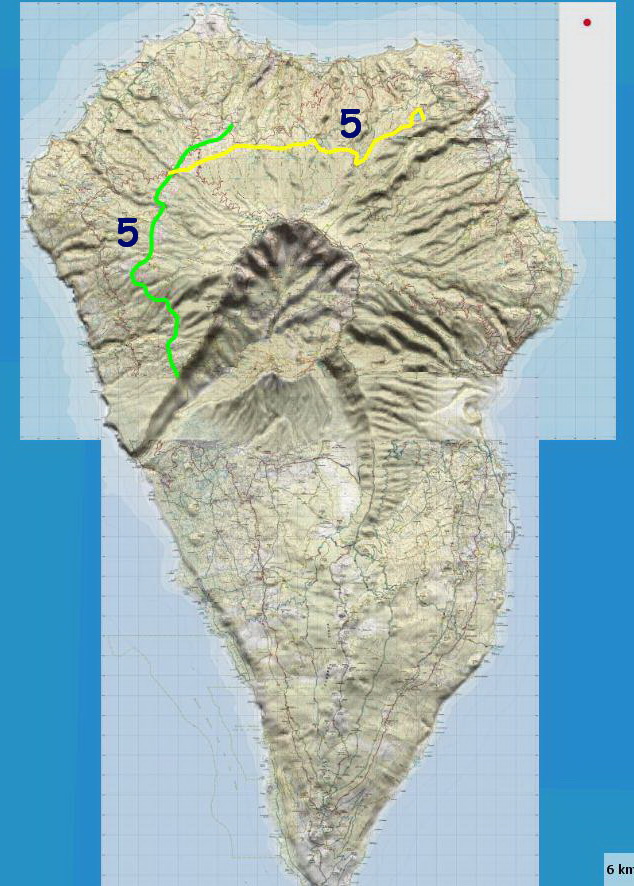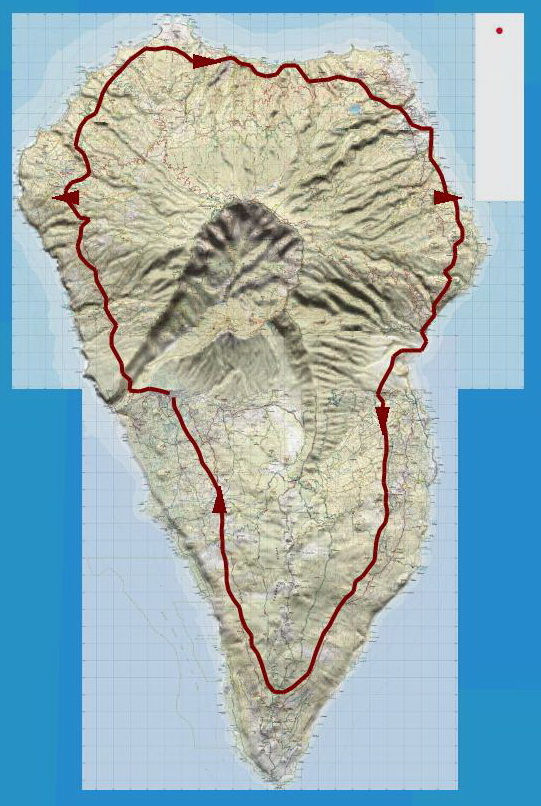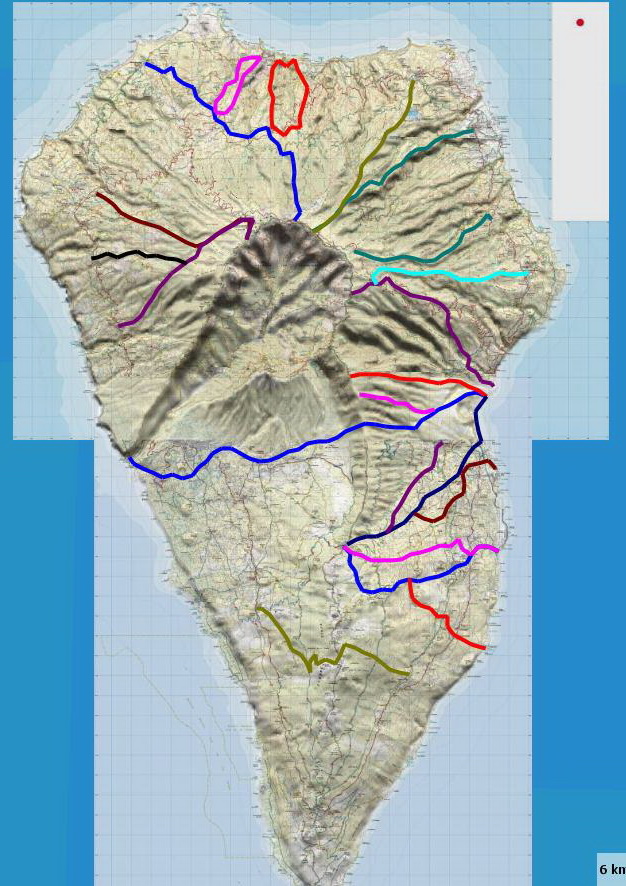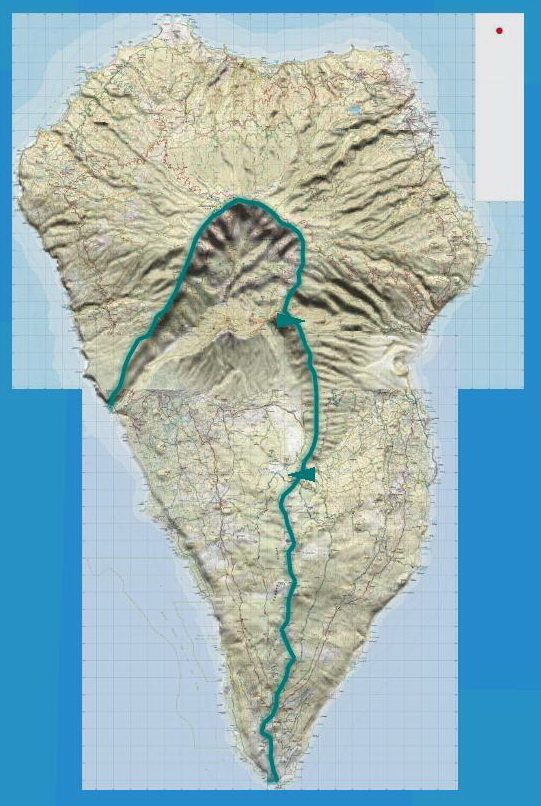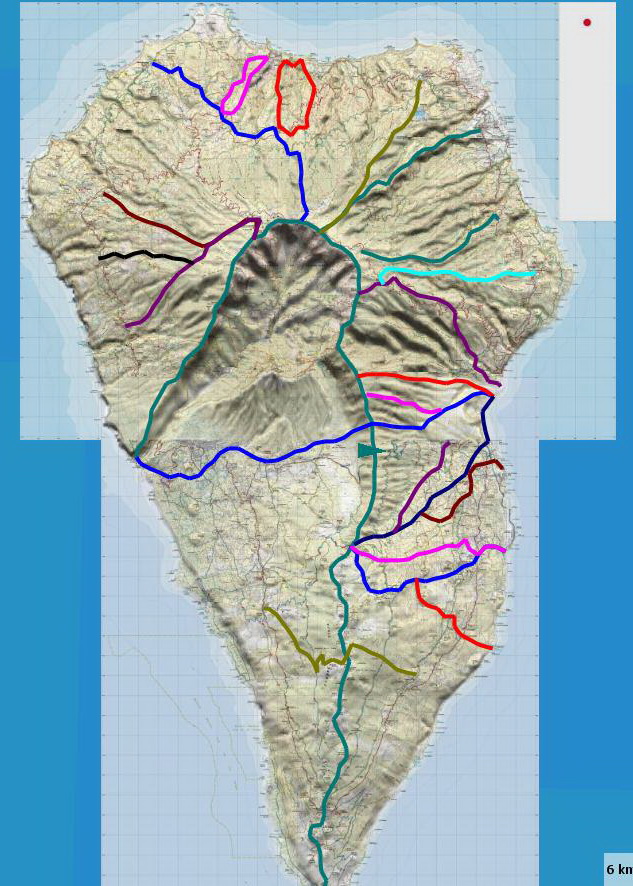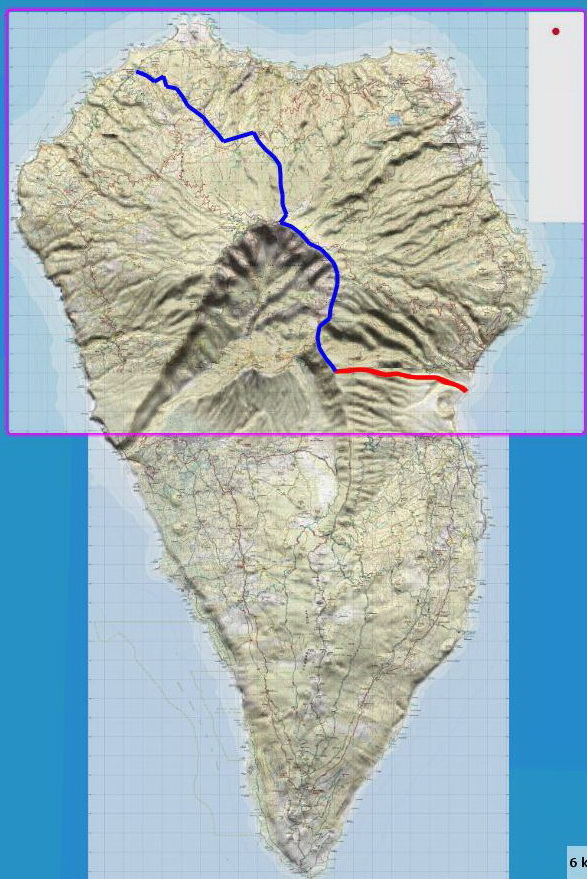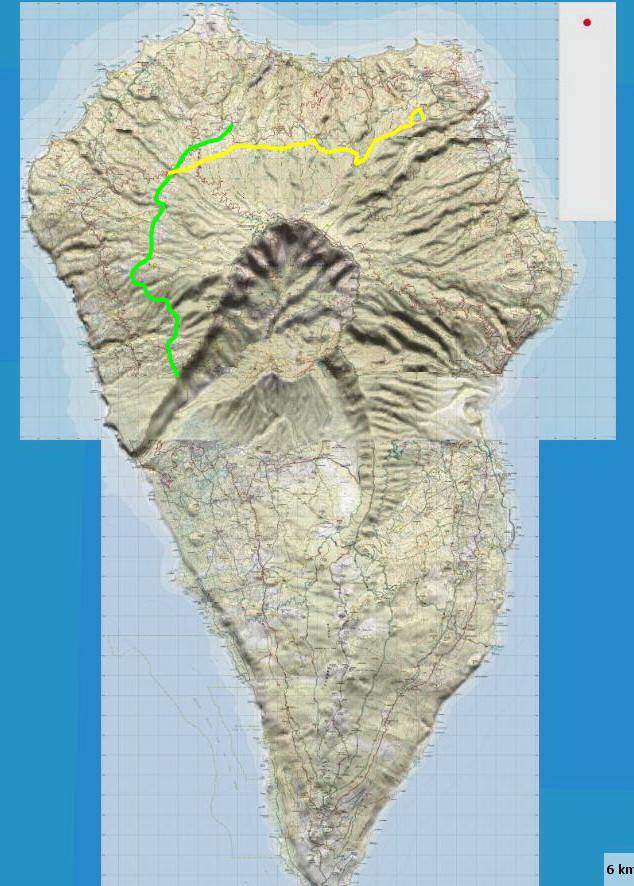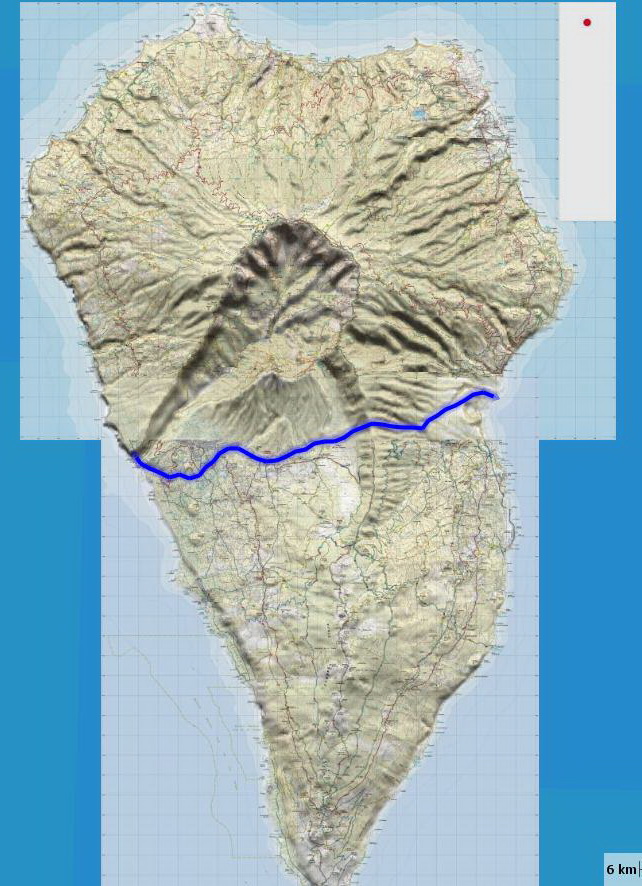|
HIKING PATHS IN LA PALMA - Up until 1950, people crossing the island used the following routes: * Some climbed the mountain slopes to the summit ridge (1- "radiales" or radial routes - PR), walked along the crest (2- "Camino de la Cumbre"- GR 131) then walked down a mountain slope (3) to their destination. * Others walked around the coast, crossing many deep and rugged gorges (4- "Camino Real de la Costa"- GR 130) * In the north and north-west, some paths crossed the gorges at a higher level where they weren't very deep (5- "Traviesas" or traverse routes - PR 10 and 20) |
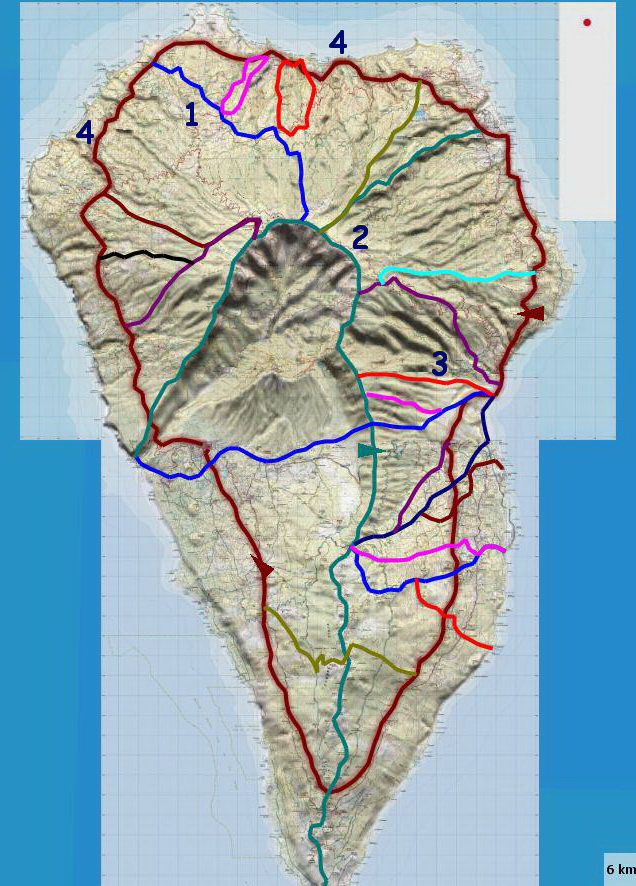 |
|---|
|
- Around 1995, the island government (Cabildo de La Palma) started opening, signposting and clearing 1000 km of the old path network to create: * GR 130 (Long-distance trail): The coastal path with a length of 159 km. * GR 131: The ridge path (87 km). * PR: The short-distance footpaths (Senderos de Pequeño Recorrido), with a length of more than 10 km climbing and crossing mountain slopes. * SL: The local footpaths, less than 10 km, linking PR and GR paths. |
|---|
THE MOST IMPORTANT HIKING PATHS |
CAMINO REAL DE LA COSTA- GR 130 (COASTAL PATH) |
|---|
CAMINOS RADIALES (RADIAL FOOTPATHS) |
EL CAMINO DE LA CUMBRE- GR 131 (THE SUMMIT- RIDGE PATH) |
|---|
CAMINOS RADIALES +CAMINO DE LA CUMBRE (RADIAL PATHS + RIDGE PATH) |
FROM GARAFIA TO SANTA CRUZ (PR 9 + GR 131 + PR 2) |
|---|
TRAVIESAS- PR 10 AND 20 (TRAVERSE ROUTES) |
THE MOST IMPORTANT FOOTPATH- PR 1, FROM PUERTO DE TAZACORTE TO SANTA CRUZ |
|---|
Many paths were already built by the aboriginal people of the Canary Islands and widened by the castilian conquerors after the 15 th. century. There are different kinds of paths: Camino Real, the main path linking the villages, Traviesa (traverse paths), Camino de tira (used for the transportation of wood in oxtracks, Vereda (narrow path), Caminos de herradura (Chart tracks used by horses and donkeys), Camino de trillo (inside a private property), Atajo (shortcut), Camino vecinal (inside a municipality), Camino de prois o puertos (linking the village with its ports or docks and Pasada (just for shepherds in steep slopes) |
